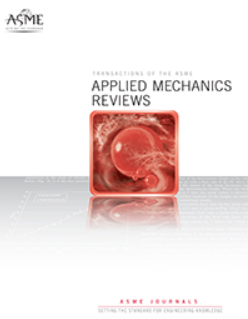Generation of Realistic Cut-In Maneuvers to Support Safety Assessment of Advanced Driver Assistance Systems
IF 16.1
1区 工程技术
Q1 MECHANICS
引用次数: 0
Abstract
Advanced Driver Assistance Systems (ADASs) attract constantly growing attention from academics and industry as more and more vehicles are equipped with such technology. Level-3 ADASs, like the DRIVE PILOT from Mercedes-Benz AG, are expected to appear more and more on the market in the next few years. However, automated driving raises new challenges for the system validation required for series approval. The replacement of a human driver as control instance expands the range of variants to be validated and verified. The scenario-based validation approach meets these challenges by simulating only specific safety-critical driving scenarios using software-in-the-loop simulation. According to the current state of the art, various safety-relevant driving scenarios are parameterized as idealized maneuvers which, however, requires a great modeling effort, and at the same time, such simplifications may bias the safety assessment. Therefore, a novel approach using artificial intelligence methods is taken here to generate more realistic driving scenarios. Namely, a generative model based on a variational autoencoder is trained with real-world data and then used to generate trajectories for a specific driving maneuver. Through a comprehensive analysis of the synthetic trajectories, it becomes clear that the generative model can learn and replicate relevant properties of real driving data as well as their probabilistics much better than the mathematical models used so far. Furthermore, it is proven that both the statistical properties and the time characteristics are almost equal to those of the input data.生成现实切入机动,以支持先进驾驶辅助系统的安全评估
随着越来越多的车辆配备先进驾驶辅助系统(ADASs), ADASs越来越受到学术界和业界的关注。未来几年,像梅赛德斯-奔驰公司的DRIVE PILOT这样的Level-3 ADASs预计将越来越多地出现在市场上。然而,自动驾驶为系列认证所需的系统验证提出了新的挑战。将人类驱动程序替换为控制实例扩展了要验证和验证的变体的范围。基于场景的验证方法通过使用软件在环仿真只模拟特定的安全关键驾驶场景来应对这些挑战。根据目前的技术水平,各种与安全相关的驾驶场景都被参数化为理想化的机动,然而,这需要大量的建模工作,同时,这种简化可能会影响安全性评估。因此,本文采用了一种使用人工智能方法的新方法来生成更逼真的驾驶场景。也就是说,基于变分自编码器的生成模型是用真实世界的数据训练的,然后用于生成特定驾驶动作的轨迹。通过对合成轨迹的综合分析,可以清楚地看到,生成模型可以学习和复制真实驾驶数据的相关属性以及它们的概率,比目前使用的数学模型要好得多。进一步证明了其统计特性和时间特性与输入数据几乎相等。
本文章由计算机程序翻译,如有差异,请以英文原文为准。
求助全文
约1分钟内获得全文
求助全文
来源期刊
CiteScore
28.20
自引率
0.70%
发文量
13
审稿时长
>12 weeks
期刊介绍:
Applied Mechanics Reviews (AMR) is an international review journal that serves as a premier venue for dissemination of material across all subdisciplines of applied mechanics and engineering science, including fluid and solid mechanics, heat transfer, dynamics and vibration, and applications.AMR provides an archival repository for state-of-the-art and retrospective survey articles and reviews of research areas and curricular developments. The journal invites commentary on research and education policy in different countries. The journal also invites original tutorial and educational material in applied mechanics targeting non-specialist audiences, including undergraduate and K-12 students.

 求助内容:
求助内容: 应助结果提醒方式:
应助结果提醒方式:


